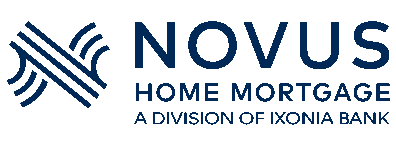
Dan Green
Homebuyer.com
Dan Green (NMLS 227607) is a licensed mortgage professional who has helped millions of people achieve their American Dream of homeownership. Dan has developed dozens of tools, written thousands of mortgage articles, and recorded hundreds of educational videos. Read more about Dan Green.

This website discusses mortgage programs and how to qualify. Your eligibility may vary based on lender guidelines and investor overlays. Check with your lender for specific details.
Trusted Content
This article was checked for accuracy as of December 12, 2024. Learn more about our commitments to accuracy and your mortgage education in our editorial guidelines.
Updated: December 12, 2024
The FHA loan, backed by the Federal Housing Administration, is the original low-down payment mortgage for first-time home buyers. It’s an inclusive mortgage program that makes homeownership accessible and more affordable.
FHA mortgages are mortgage loans insured by the Federal Housing Administration, which is part of the U.S. Department of Housing and Urban Development (HUD).
The FHA was founded as an insurance agency in the National Housing Act of 1934. It offered mortgage default insurance to banks so banks would agree to make loans in their communities.
More than 90 years later, the FHA fills the same role.
The group publishes a set of rules called mortgage guidelines. Any mortgage loan that meets FHA guidelines is eligible for approval.
The most well-known FHA guideline is its low down payment requirement, which is a 3.5 percent minimum down payment. The FHA also enforces less stringent credit requirements compared to other government-backed mortgages.
887,234 people used FHA mortgages to buy a home last year. Other FHA mortgage statistics include:
FHA mortgages are available as 30-year fixed-rate, 15-year fixed-rate, or adjustable-rate mortgages. All FHA loans adhere to FHA mortgage loan limits.
The current FHA loan limit for single-family homes, including detached homes, townhomes, and condos, is $498,257 and ranges up to $1,149,825 in high-cost areas of the country.
There is no prepayment penalty for paying an FHA loan ahead of schedule and FHA loans are assumable mortgages, which means that when a buyer sells their home, the new owner can use the same FHA mortgage at the same mortgage interest rate.
Check your eligibility and begin your application now.
To qualify for an FHA-insured loan, first-time home buyers and their homes must meet FHA eligibility standards, summarized here:
The FHA makes special provisions for buyers without credit history or credit score.
Buyers don’t need social security numbers, either. Non-permanent resident aliens can use FHA mortgages, as can employees of the World Bank and foreign embassies.
FHA mortgage guidelines are less rigorous than other government-backed mortgage programs, making them ideal loans for first-time buyers.
If you’ve been turned down for another loan type, an FHA-backed mortgage could help you stop renting and start owning: FHA mortgages are the original first-time home buyer program.
The FHA backs purchases and refinances for eligible U.S. households. Since insuring its first mortgage in the 1930s, the agency has built a menu of six different loan types. Each loan type solves a specific home buyer’s need.
FHA 203b loan is the official government name for the standard FHA-backed mortgage. 203b loans rarely get called by their proper name. Mortgage lenders, real estate agents, and everyone else calls them “FHA loans.”
The FHA 203b loan is the default mortgage option for FHA-backed buyers. It allows for a 3.5 percent down payment, flexible mortgage guidelines, and a low minimum credit score.
The FHA’s 203(k) renovation loan is a dual purchase + home improvement loan. It combines mortgage and home renovation costs into a 30-year fixed-rate mortgage with a single monthly payment.
The FHA 203(k) makes home repairs and construction more affordable for FHA-backed borrowers. The program is excellent for:
The FHA 203(k) removes health and safety hazards for ADA compliance.
The FHA is a sub-agency within the U.S. Department of Housing and Urban Development (HUD). In 1968, HUD established a program to sell homes it acquired through foreclosure. The program, known as HUD Homes, sells foreclosed residential properties to the public at steep discounts.
Down payment requirements vary for buyers of HUD-owned homes. Some require the standard 3.5 percent of an FHA loan. Others allow down payments as low as $100.
Firefighters, educators, law enforcement officials, and EMTs can purchase HUD homes in low- and moderate-income areas at 50% off their list price through the Good Neighbor Next Door program.
Buyers are required to live in their homes for at least three years, except for members of the military who receive clemency for time spent on active duty.
The FHA Streamline Refinance is the most straightforward, fastest mortgage refinance available to FHA-backed homeowners.
It doesn’t require any of the typical verifications associated with mortgage lending:
To be eligible for the FHA Streamline Refinance, homeowners must show:
The FHA Streamline Refinance is a low-risk loan because it reduces the monthly payment for borrowers who already make on-time payments. In general, the default rate on FHA Streamline Refinances is lower than for FHA loans.
Before qualifying, you must have already completed at least six monthly payments on your existing loan.
The FHA cash-out refinance lets homeowners replace their current mortgage with a larger one to convert home equity into spendable cash.
The FHA cash-out guidelines limit mortgage loan sizes to 80% of a home’s appraised value. Loan sizes must remain within local FHA loan limits. Homeowners may not cash out their refinance within the first 12 months of occupying a home.
The LIFT Act is a proposed bill that uses FHA mortgages to help renters buy their first home.
The LIFT Act changes how mortgage payments are structured. Each payment contains more principal than usual, which reduces a homeowner’s balance more quickly. The LIFT Act targets first-time home buyers with FHA-eligible credit scores and low to moderate-income levels.
The LIFT Act has not yet been passed into law, but when it is, home buyers can use it with other first-time home buyer programs like the First-Time Home Buyer Tax Credit and the Downpayment Toward Equity Act.
FHA mortgage insurance is a specific type of insurance that is mandatory with FHA loans. When a home buyer uses an FHA loan, they must also pay for mortgage insurance.
FHA mortgage insurance is paid in two parts.
The FHA mortgage insurance schedule changes periodically. The current schedule was established in March 2023. It includes upfront mortgage insurance equal to 1.75 percent of the loan amount, and annual MIP rates that vary by down payment, loan size, and loan length.
The FHA automatically adds upfront MIP to a buyer’s loan balance. It collects 1/12 of the annual mortgage insurance monthly within the buyer’s mortgage payment.
Under current FHA rules, annual MIP remains in place for the life of the loan, regardless of the loan’s principal balance, loan-to-value, or payments made. This was not always the case and could change with future updates to FHA guidelines.
FHA mortgage insurance premiums differ for FHA refinances, including the FHA Streamline Refinance, and Hawaiian Home Lands and Indian Lands loans.
The FHA periodically reviews and adjusts its mortgage insurance premium rates to achieve balance between promoting affordable homeownership and protecting its member mortgage companies.
When FHA MIP changes, it reflects the current housing market, economic environment, and health of the agency’s Mutual Mortgage Insurance Fund (MMIF), the cash reserves from which the FHA pays insurance claims.
The overall health of the housing market, including home prices and foreclosure rates, plays the largest role in the FHA’s decision to change prices. The FHA might reduce MIP rates in a strong housing market because default risks are lower. Conversely, it might increase rates in a struggling market to accumulate more reserves.
Changes in the U.S. economy, such as changes in unemployment rates, inflation, and consumer spending, influence FHA MIP policy. Making adjustments linked to macro- and micro-forces on the economy helps the FHA better manage its loan default risk.
The FHA must keep a cash balance of at least 2 percent of its outstanding loan balances in its Mutual Mortgage Insurance Fund (MMIF), a cash reserve from which the FHA pays claims.
When there’s a forecasted increase in loan default rates, the FHA may raise premiums on new FHA home buyers to protect FHA lenders and stabilize the housing market. Conversely, a forecasted decrease or sustained strong performance can result in an FHA MIP reduction.
| MIP Change Date | Annual MIP | Upfront MIP |
|---|---|---|
| October 2008 | 0.55% | 1.75% |
| April 2010 | 0.55% | 2.25% |
| October 2010 | 0.90% | 1.00% |
| April 2011 | 1.15% | 1.00% |
| April 2012 | 1.25% | 1.75% |
| April 2013 | 1.35% | 1.75% |
| January 2015 | 0.85% | 1.75% |
| March 2023 | 0.55% | 1.75% |
Source: FHA, https://www.hud.gov/program_offices/administration/hudclips/letters/mortgagee
Assumptions: 30-year fixed-rate FHA mortgage, 3.5% downpayment up to FHA mortgage loan limit
Conventional mortgages are loans backed by one of two other government mortgage agencies, Fannie Mae and Freddie Mac.
Conventional mortgages differ from FHA loans because the government does not insure them.
Conventional mortgage loans permit more fixed-rate mortgage terms than FHA loans. They also allow additional adjustable-rate mortgage terms, too. Home buyers using a conventional mortgage can choose a 10-, 15-, 20, or 30-year fixed-rate mortgage; or a 3-, 5-, 7-, or 10-year adjustable-rate term.
There are also multiple three-percent down, low down payment mortgages available through conventional mortgage financing:
Here’s a comparison:
| FHA Loan | Conventional Loan |
| 3.5 percent down payment | 3 percent down payment |
| No credit score minimum | Minimum credit score threshold |
| Mortgage insurance mandatory | Mortgage insurance requirements based on equity percentage |
| $498,257 loan limit | $806,500 loan limit |
| Primary residence only | Primary, second, and non-owner occupancy allowed |
Since its start in 1934, the FHA program has supported affordable homeownership. The success of the FHA led to the creation of another government-backed mortgage program: the USDA loan.
USDA loans are mortgage loans backed by the U.S. Department of Agriculture to promote home affordability in suburban and rural census tracts.
USDA loans are 100% mortgages that require no down payment. Compared to FHA mortgage guidelines, USDA guidelines are more restrictive.
Additionally, USDA loans are only available to home buyers in low-density census tracts, as defined in this USDA eligibility map. 91% of the United States is USDA mortgage-eligible.
Here is a more detailed look at the differences between FHA loans and USDA loans:
| FHA Loan | USDA Loan |
| Homes everywhere | Homes in less-dense areas |
| 3.5 percent down payment | No down payment required |
| No credit score minimum | Low credit score minimum |
| No income limitations | Moderate income limitations |
| $498,257 loan limit | No maximum loan size |
Learn more about USDA loans.
Yes, FHA loans are available in all 50 states.
Yes. The FHA is the only government agency allowing a home buyer’s entire down payment to come as a gift. It’s also the only agency that lets cash gifts come from a friend. Some home buyers add down payment cash to their wedding and baby shower registries.
Yes, FHA mortgages are assumable, which means that your home’s future buyer can purchase your mortgage from you along with your home too. Assumable mortgages make your home more affordable to others after mortgage rates rise. You can sell your 4% mortgage rate in a 10% mortgage rate market.
Yes. FHA-backed homeowners get access to the FHA Streamline Refinance. When mortgage rates are down, homeowners can switch to lower-rate mortgages irrespective of their work status, money in the bank, or credit score. Home appraisals aren’t required.
No. FHA mortgages don’t require home buyers to make a larger down payment or accept a higher interest rate when buying a multi-unit home. FHA mortgages allow 3.5 percent down regardless of property type.
Yes, the FHA allows home buyers to negotiate with home sellers to contribute up to 6% percent of the purchase price toward closing costs. These contributions are known as seller concessions and can be applied to any costs on a settlement statement.
FHA loans require that buyers make a down payment of at least 3.5 percent against the purchase price, or $3,500 for every $100,000. There is no maximum down payment amount.
FHA loans require most buyers to have a credit score of 500 or higher, but borrowers with scores of at least 500 may still be eligible with a down payment of 10 percent or more.
Wave goodbye to waiting times and say hello to our faster, better mortgage application. It's available anytime you are, 24/7/365. The power to approve your mortgage is just a click away.

A Division of Ixonia Bank
Member FDIC. Equal Housing Lender.
Homebuyer.com
Operated by Novus Home Mortgage,
A Division of Ixonia Bank
1311 Vine St
First Floor
Cincinnati, OH 45202
513-824-8171
Notices
Mortgages
Notifications